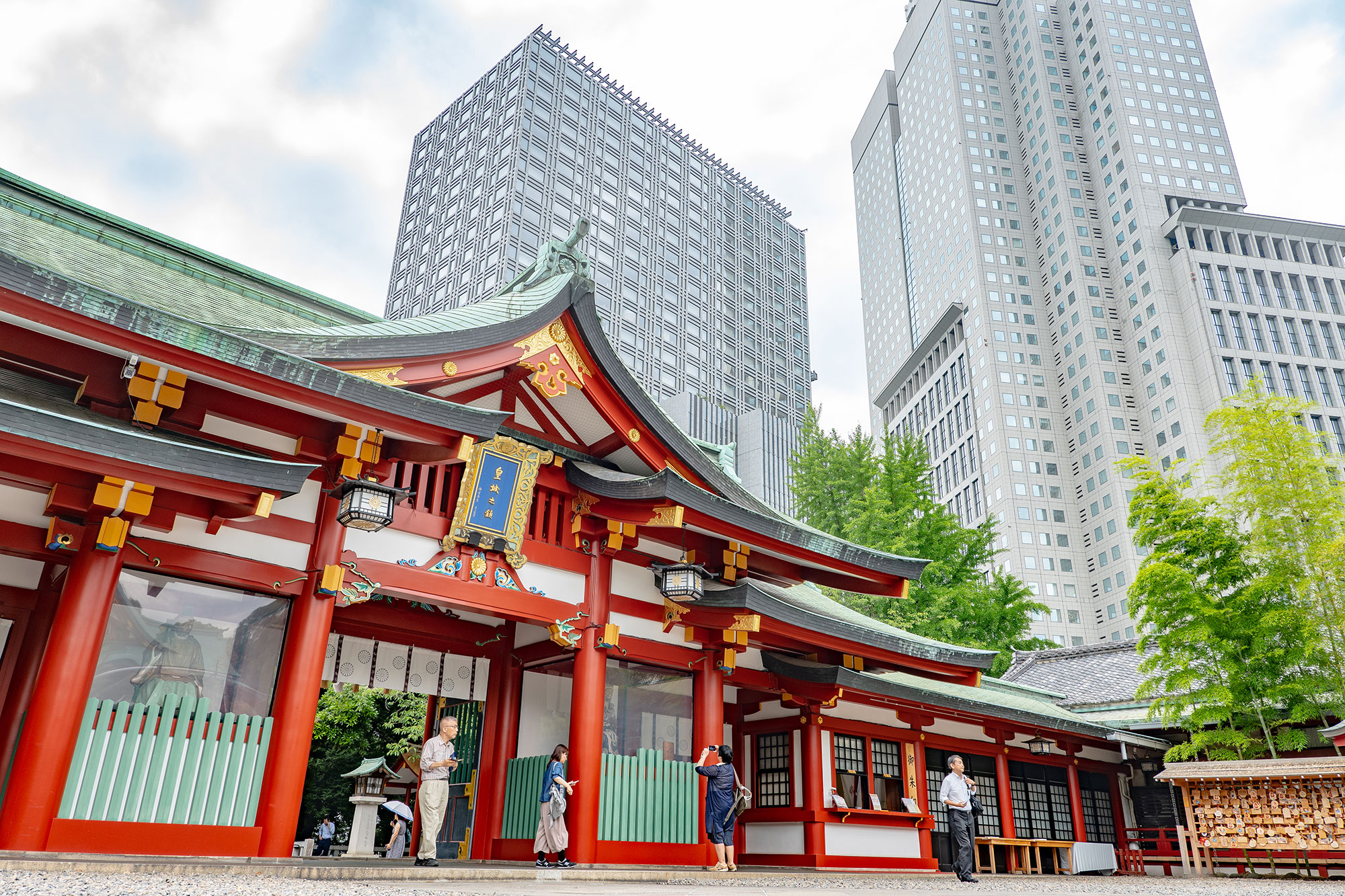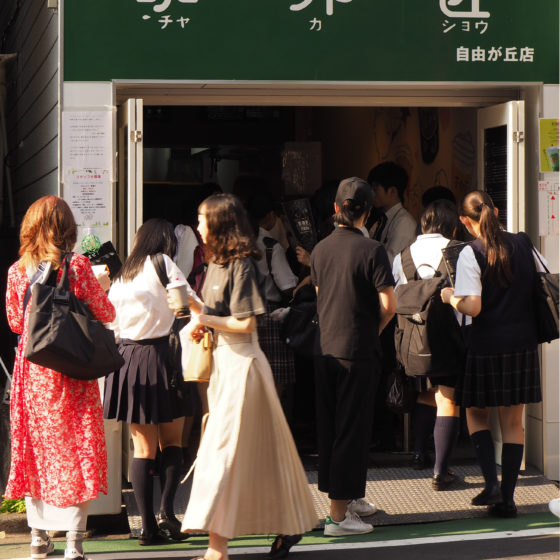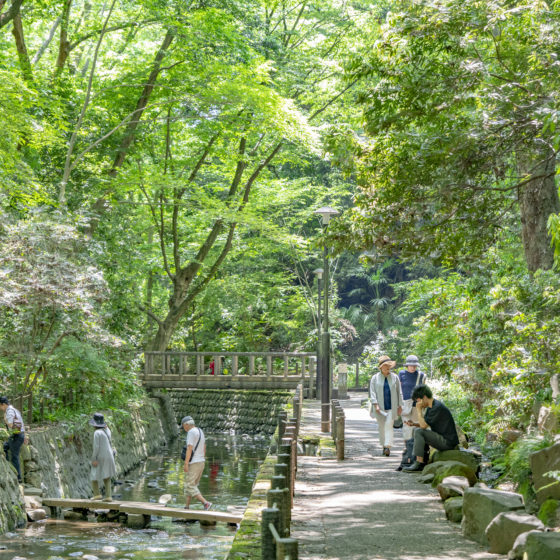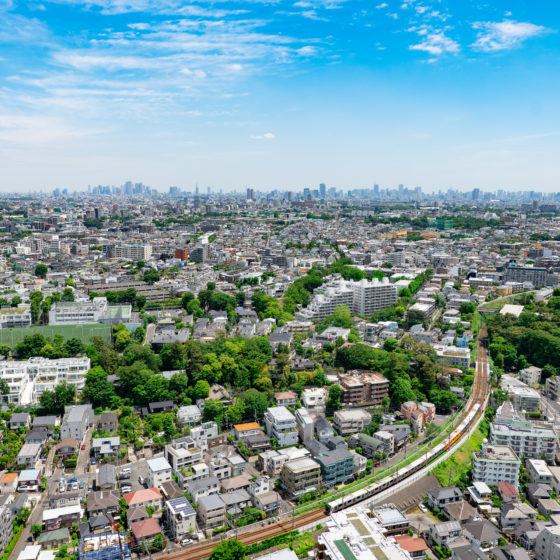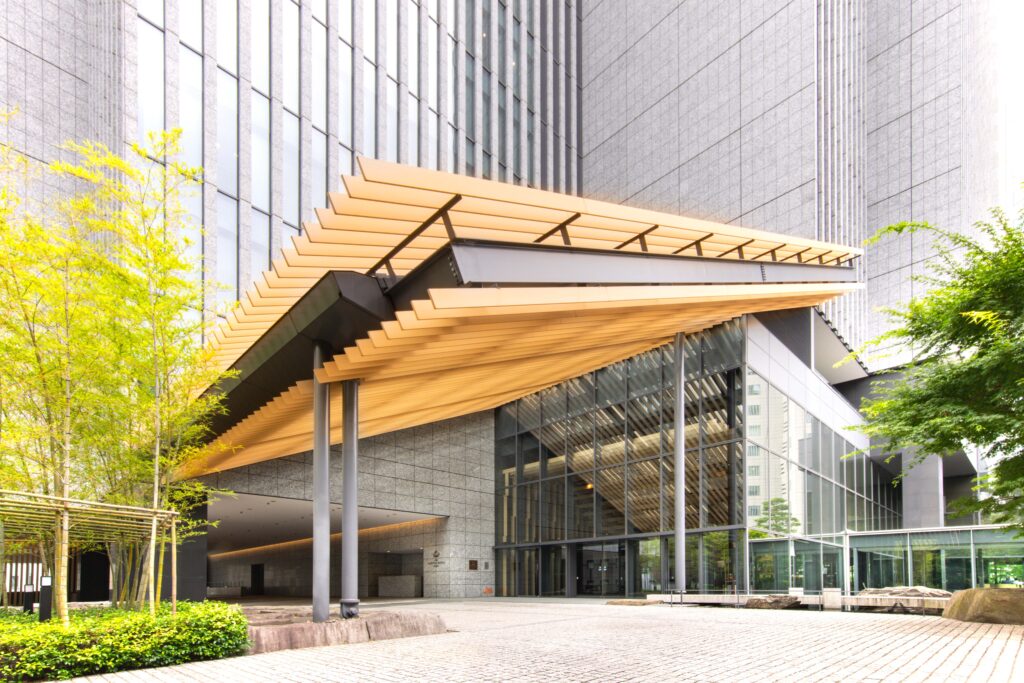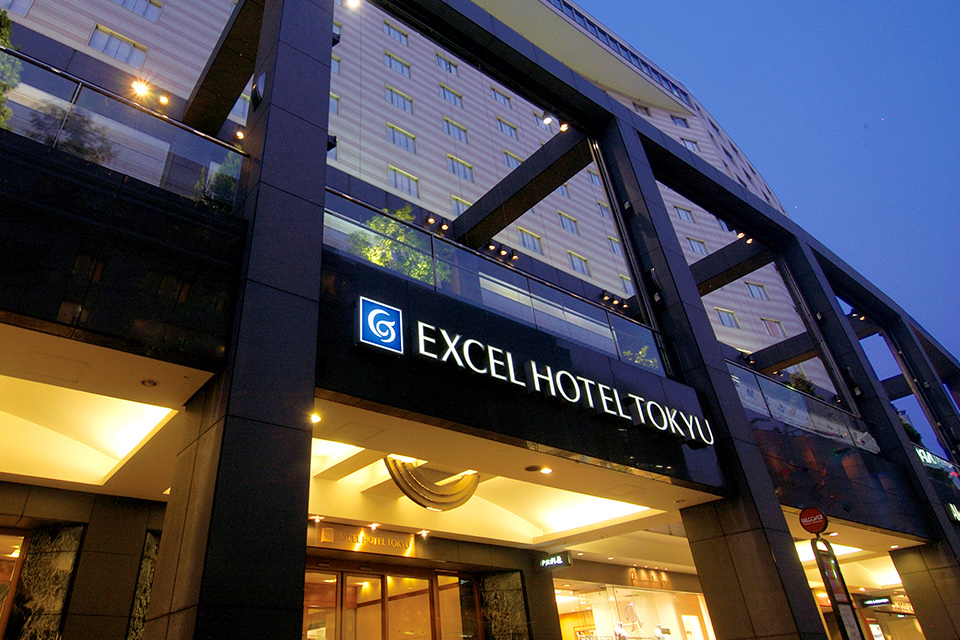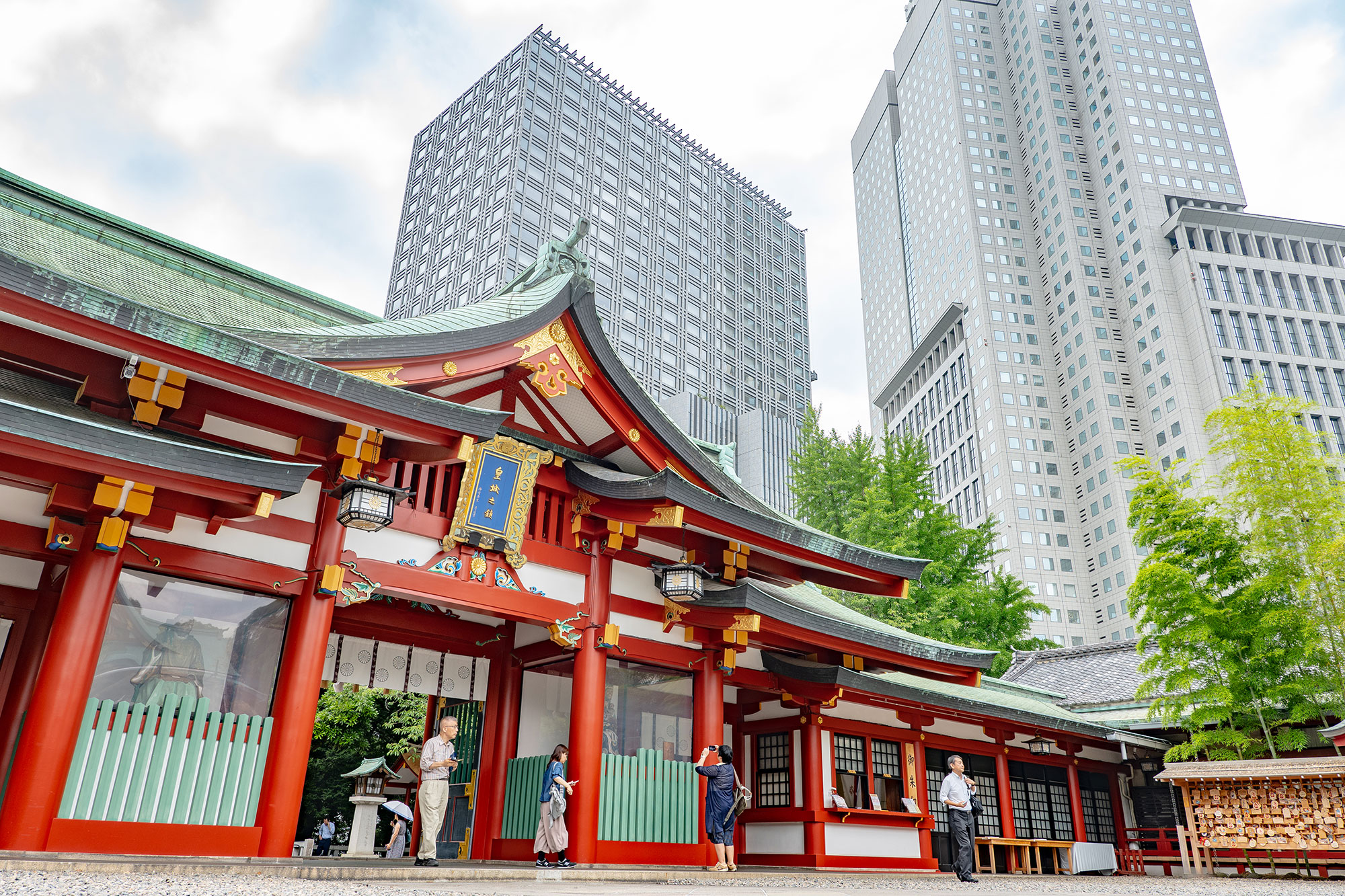
The main hall of Hie Shrine with a beautiful contrast between a bronze roof and vermilion beams and columns. - Edo Castle (now the Imperial Palace), base of the shogunate, was first a small castle. In 1590, to demonstrate shogunate authority, Ieyasu began work on Edo Castle, what would be architecture and construction on a massive scale. The main (Honmaru) palace, with donjon and shogun residence, was completed in 1603. Next came the building of enormous stone walls and the digging of inner and outer moats. A half-century after breaking ground, the massive Edo Castle was completed in 1640.
- Encircled by two moats, the castle was fortified with a formidable defense. Thirty-six mitsuke castle gates aligned with inner and outer moats effectively detected and guarded enemy incursion. The gate of Akasaka Gomon (now Akasaka Mitsuke) secured the west face. Even today, part of the Akasaka Gomon stone walls remain in Kioi-cho, alongside Route 246.
- The “saka” of Akasaka refers to a slope. Lords (daimyo) and retainers (hatamoto) lived on the high ground, atop the slope. The area at the slope base, near the front of the gate, was where lesser retainers, craftsmen working in the castle, and common folk lived. Rivers that ran through low-lying land flowed into a man-made pond (tameike) that sourced a reservoir for Edo people. That pond is now part of the area around present-day Tameike-sanno Station.
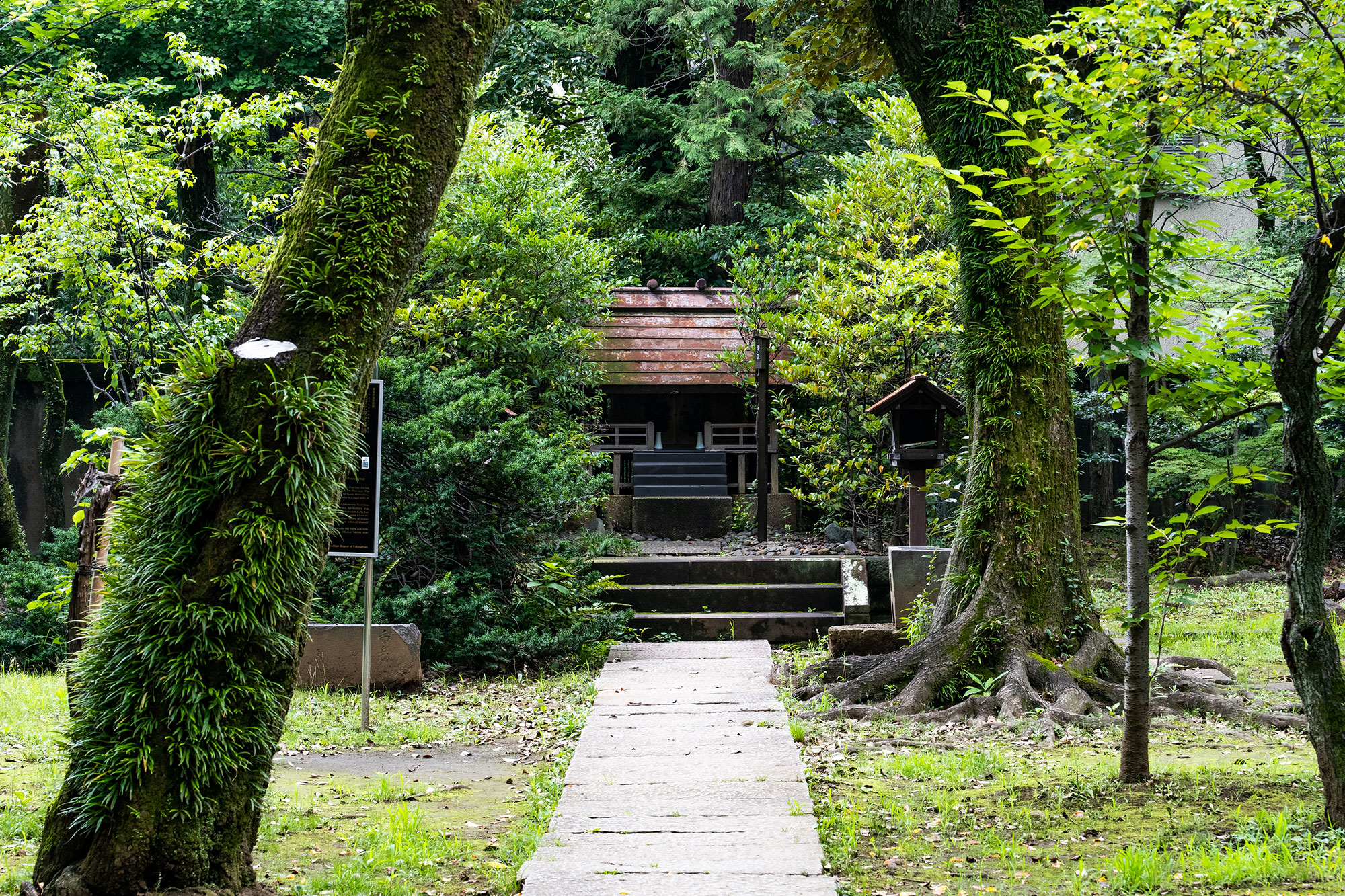
The Akasaka Hikawa Shrine surrounded by greenery.
Sacred Legacy of Edo
- Well-known among Akasaka’s Shinto shrines and Buddhist temples with proud traditions from the Edo period (1603–1868) is Hie Shrine, facing Sotobori-dori with a beautiful copper roofing main hall. Ieyasu established it within the castle for protection. The shrine was later moved outside castle grounds to Kojimachi-Hayabusacho, and the public worshipped there. Shrine buildings burned down in the great fire of 1657, leading to the shrine being moved to its present Akasaka location one year later.
- Another shrine, Akasaka Hikawa, houses ujigami — local deity of Akasaka and Roppongi — and was originally enshrined in Akasaka Hitotsugimura around 1,000 years ago. It’s believed that prayers offered to ujigami during a great drought will bring rain. The vermillion shrine building of Japanese zelkova wood miraculously survived the 1855 Edo earthquake, the 1923 Great Kanto earthquake, and WW2. Shrine grounds incorporate trees, greenery, stone lanterns, stone figures of guardian dogs, and torii gates engraved with Edo-period names: scenes unchanged from Edo times. Autumn sees huge 400-year-old ginkgo trees designated as natural national monuments turn glorious shades of yellow. During the Akasaka Hikawa Festival held in September, Edo-period mikoshi and festival floats wind their way through streets of the district.
- Another impressive sacred structure dating back to the Edo Period is Toyokawa Inari Tokyo Betsuin, a Soto Buddhist temple interestingly home to hundreds of Shinto fox god statues. Temple worship is said to grant worldly success, domestic well-being, and business prosperity, so many people go there.
Meiji Restoration and Akasaka
- Akasaka in Edo times had a concentration of samurai houses that belonged to daimyo, hatamoto, and other high-ranking samurai. After they returned to their domains after the Meiji Restoration, which restored imperial rule over the shogunate in 1868, the houses were abandoned and fell into disrepair. Political control shifted from samurai to Imperial Court nobility, and the world suddenly changed for aristocrats as well as commoners. Daimyo homes became those of Kyoto nobles as well as new Meiji Government officials, military personnel, and financiers. As the times undergo dramatic change, so do the many faces of Akasaka.
Hie Shrine
- 2-10-5 Nagata-cho, Chiyoda-ku, Tokyo Japan
- hiejinja.net/english/index.html
AKASAKA HIKAWA Shrine
- 6-10-12 Akakska, Minato-ku, Tokyo Japan
- akasakahikawa.or.jp/



